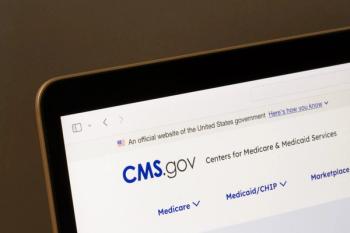
Investigators Evaluate Decline in Percentage of Patients With COPD Using Inhaled Corticosteroids
Key Takeaways
- ICS use in COPD patients declined by 8.2% over 15 months, with a focus on reducing inappropriate prescriptions.
- ICS can cause adverse effects, particularly with long-term use, including immune suppression and increased infection risk.
A study reveals a significant decline in inhaled corticosteroid use among COPD patients, highlighting the need for careful management and monitoring.
Investigators of a study published in NPJ Primary Care Respiratory Medicine evaluated the decline in the percentage of patients with chronic obstructive pulmonary disease (COPD) that used inhaled corticosteroids (ICS) and their outcomes. In the 15-month study, the percentage of patients who used ICS declined by 8.2%.1
“This reduction may not appear substantial, but it is important to note that this decline was observed across the entire COPD population, including the 62.3% of patients that did not use ICS at the start of the project,” the study authors wrote.1
ICS are treatments that prevent asthma exacerbations for patients who have persistent asthma and have been used off label to manage COPD. Approximately 40% to 50% of patients with COPD receive ICS therapy, which decreases the number of exacerbations and may slow the progression of lung disease. ICS are also most often used as an adjunct to long-acting inhaled bronchodilators.2
However, the American Lung Association stated that ICS typically come with adverse effects (AEs), specifically for long-term use. Corticosteroids are steroids that help to reduce and control inflammation in the body, but in high doses, the medication can suppress the immune system. AEs are most common for patients who use the drug long-term or administer higher doses. Common AEs include weight gain, fluid retention, increased blood sugar levels, high blood pressure, osteoporosis, increased risk of infection, and mood swings.3
Investigators of the current study aimed to reduce inappropriate ICS use for patients with COPD. The strategy included avoiding first prescriptions for patients with no indication for ICS use, withdrawing inappropriate ICS use, and preventing restarting ICS for inappropriate reasons. They included 114 practices in the Netherlands in January 2022. Overall, 2.2% of the general practice population had COPD, and 62.2% of patients were diagnosed by a general practitioner. Of 5003 patients in the COPD IDM program, data for 4269 were available. Approximately 51.2% of patients had used ICS in the previous year, and 37.6% were currently using ICS.1
Of practices interested in reducing inappropriate ICS use, 27 were included in the study. One practice dropped out, and 7 practices had no ICS withdrawals. Further, 4 practices had a decline in study participants. Overall, 67.1% of patients in the study quit ICS use (n = 51), with a median age of 70 and 51% being male. The current ICS use declined by 4.7%. The incomplete participation groups had slightly larger reductions, although it was not significantly different from the passive exposure group.1
Overall, 76 patients stopped ICS use, and 84.3% reported withdrawal attempts that were successful. Five patients experienced moderate exacerbations, which led to the reintroduction of ICS for 3 patients. Furthermore, investigators reported that 90.5% of participants had positive responses to the supervision they received during their ICS withdrawal attempt. However, approximately 10.5%, or 6 patients, would not recommend ICS withdrawal to other patients, and 4 of those patients experienced exacerbations.1
“The strategy led to a relevant reduction in ICS prescriptions across the region, with both patients and practice nurses expressing high levels of satisfaction and engagement,” the authors said. “While these findings are promising, further research is needed to assess further penetration of the strategy in the region and its long-term sustainability, and to explore the applicability of comparable plans in other regions.”
REFERENCES
1. van den Bemt L, van Bremen B, de Boer J, et al. De-implementation of inappropriate inhaled corticosteroid use in patients with COPD in general practice, results of a mixed methods study. NPJ Prim Care Respir Med. 2025;35(1):44. Published 2025 Oct 14. doi:10.1038/s41533-025-00448-4
2. Liang TZ, Chao JH. Inhaled Corticosteroids. [Updated 2023 May 8]. In: StatPearls [Internet]. Treasure Island (FL): StatPearls Publishing; 2025 Jan-. Available from: https://www.ncbi.nlm.nih.gov/books/NBK470556/
3. American Lung Association. The potential risks of repeated corticosteroid use. September 10, 2024. Accessed October 31, 2025. https://www.lung.org/blog/corticosteroid-use-risks
Newsletter
Pharmacy practice is always changing. Stay ahead of the curve with the Drug Topics newsletter and get the latest drug information, industry trends, and patient care tips.





















































































































































